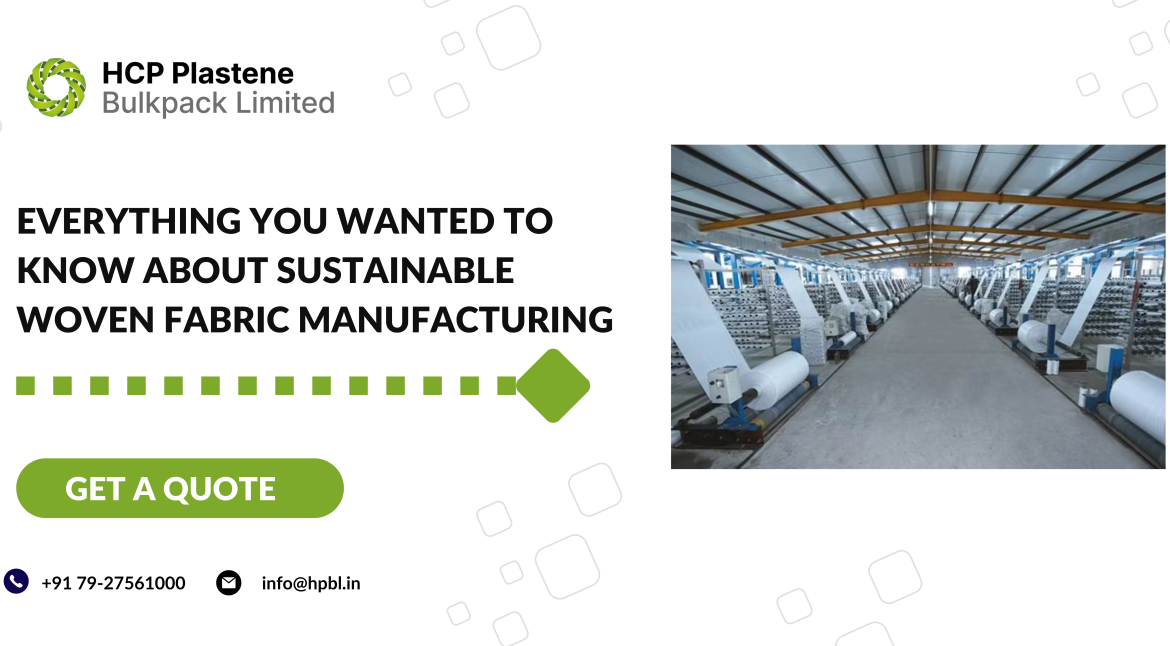The global fashion and textile industry is undergoing a significant transformation. With rising environmental awareness and the growing demand for eco-conscious products, sustainable woven fabric manufacturing has become a necessity rather than just a trend. From reducing carbon footprints to conserving water and minimizing chemical usage, sustainable practices in textile production are shaping a cleaner and greener future. In this blog, we’ll explore what sustainable fabric manufacturing means, why it matters, and how woven fabric manufacturers in India and consumers can contribute to this vital movement.
What is Sustainable Woven Fabric Manufacturing?
Sustainable woven fabric manufacturing refers to the process of creating textiles in a way that minimizes environmental impact and promotes social responsibility. It involves using eco-friendly raw materials, reducing energy and water consumption, avoiding harmful chemicals, and ensuring fair labor practices. This approach spans the entire lifecycle of fabric, from raw material sourcing and processing to dyeing, finishing, and end-of-life disposal or recycling. The goal is to create fabrics that are not only gentle on the environment but also safe and ethical for everyone involved in the production chain.
The Need for Sustainability in Textile Production
The traditional textile industry is one of the most resource-intensive and polluting industries globally. The fashion industry contributes around 10% of global carbon emissions. Textile dyeing is responsible for 20% of global wastewater. Also, producing a single cotton T-shirt requires over 2,700 liters of water.
These numbers highlight the urgency of adopting sustainable practices in fabric manufacturing. By making the switch, manufacturers can reduce environmental degradation, improve worker conditions, and cater to a market increasingly focused on green alternatives.
Key Components of Sustainable Fabric Manufacturing
-
Eco-Friendly Raw Materials
Sustainable fabric production starts with responsible material choices. This includes:
- Organic cotton: Grown without pesticides or synthetic fertilizers.
- Hemp: Naturally pest-resistant and requires less water.
- Linen (flax): Biodegradable and needs fewer resources.
- Recycled fibers: Such as recycled polyester made from PET bottles.
- Bamboo fabric: Produced using closed-loop systems to reduce waste.
These materials significantly reduce the environmental footprint compared to conventional synthetic fabrics.
-
Water and Energy Conservation
Conventional textile manufacturing consumes vast amounts of water and energy. Sustainable practices aim to minimize this by:
- Using low-water dyeing techniques.
- Recycling water through closed-loop systems.
- Utilizing solar or renewable energy sources for operations.
- Optimizing machinery for energy efficiency.
These methods not only reduce environmental impact but also lower production costs over time.
-
Non-Toxic Dyeing and Finishing
The dyeing process is notorious for using harmful chemicals that pollute waterways and pose health risks. Sustainable manufacturing uses:
- Natural dyes are made from plants and minerals.
- Low-impact synthetic dyes with reduced heavy metal content.
- Waterless dyeing technologies like CO₂ dyeing.
In addition, sustainable finishes avoid formaldehyde and other toxic agents, making fabrics safer for consumers and the environment.
-
Waste Reduction and Recycling
Sustainable manufacturers aim for zero waste by:
- Reusing fabric scraps and off-cuts.
- Creating recyclable or compostable fabrics.
- Offering take-back programs for post-consumer garments.
Some innovations even include circular fashion models, where fabrics are designed for disassembly and reuse at the end of their lifecycle.
-
Ethical Labor Practices
True sustainability extends beyond environmental factors. Ethical manufacturing ensures:
- Fair wages and safe working conditions.
- No child labor or exploitation.
- Transparency in supply chains.
Certifications like Fair Trade, SA8000, and WRAP help verify ethical compliance in textile manufacturing units.
Benefits of Sustainable Fabric Manufacturing
Adopting sustainable fabric practices offers multiple benefits, such as:
- Environmental Protection: Reduced pollution, waste, and resource use.
- Brand Value: Aligning with eco-conscious values enhances reputation.
- Consumer Trust: Transparency and ethical practices build loyalty.
- Cost Savings: Efficient resource use leads to long-term savings.
- Regulatory Compliance: Meeting growing environmental regulations globally.
Certifications to Look For
When choosing sustainable fabrics or suppliers, look for globally recognized certifications:
- GOTS (Global Organic Textile Standard)
- OEKO-TEX® Standard 100
- Bluesign®
- Cradle to Cradle Certified™
- Recycled Claim Standard (RCS)
These labels indicate adherence to sustainable and ethical standards in fabric production.
The Role of Consumers and Businesses
While manufacturers play a central role, consumers and fashion brands also drive the demand for sustainability. Here’s how you can contribute:
- Choose eco-certified fabrics and products.
- Support transparent and ethical brands.
- Opt for quality over quantity.
- Recycle or donate old clothing responsibly.
Businesses, on the other hand, can integrate sustainable sourcing into their supply chain and communicate their green efforts transparently to gain a competitive edge.
Conclusion
Sustainable fabric manufacturing is no longer a niche but is a fundamental shift toward a responsible and eco-conscious future. As climate change and environmental degradation escalate, the textile industry has a unique opportunity to make a significant difference. By embracing sustainable practices, we can weave not just beautiful fabrics but a better future for generations to come.










